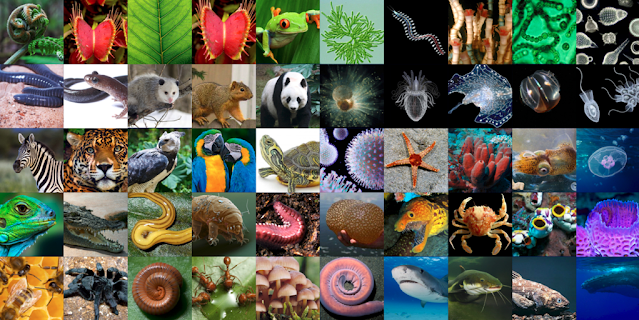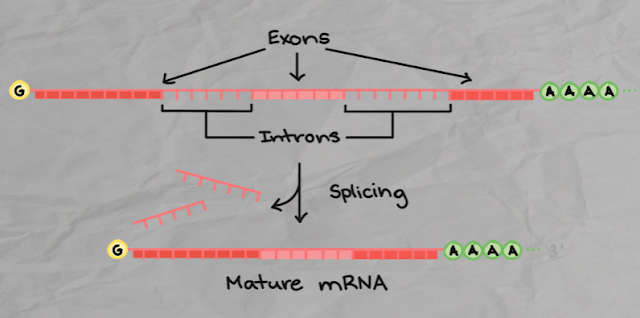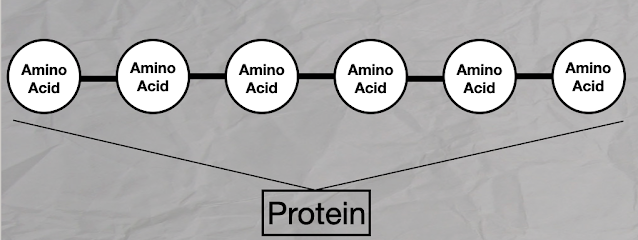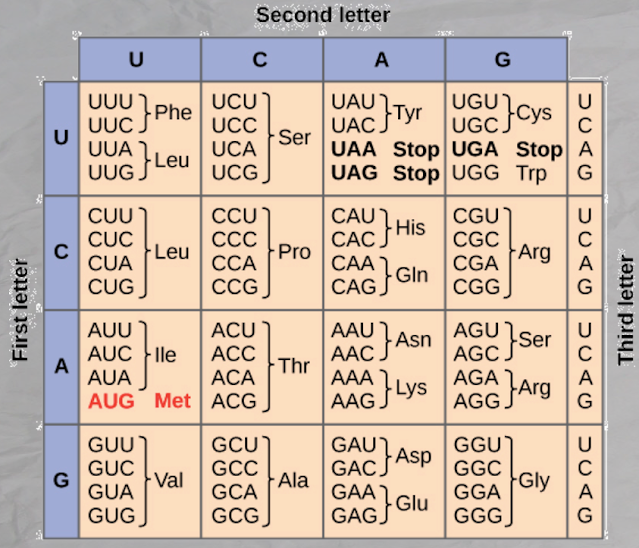Where are we going with this? The information on this page should increase understanding related to this standard: Demonstrate how DNA sequence information is decoded through transcriptional and translational processes within the cell in order to synthesize proteins. Examine the relationship of structure and function of various types of RNA and the importance of this relationship in these processes.
The goal of protein synthesis is to make a protein. In other places, we have discussed that proteins do a wide variety of functions in the body and/or are expressed as a trait.
Amino acids consist of a basic amino group (―NH2), an acidic carboxyl group (―COOH), and an organic R group (or side chain) that is unique to each amino acid. The term amino acid is short for α-amino [alpha-amino] carboxylic acid. Each molecule contains a central carbon (C) atom, called the α-carbon, to which both an amino and a carboxyl group are attached. The remaining two bonds of the α-carbon atom are generally satisfied by a hydrogen (H) atom and the R group (Source, 2021-09-01).
Amino acids are organic compounds that combine to form proteins (Source, 2021-09-01).
The general form of an amino acid looks like this.
There are 20 common amino acids used by all living things. In addition to proteins, amino acids form peptides and polypeptides, but… let's hold off on that for now.
Let's recap… before we press on…
Proteins are made of amino acids.
Amino acids have four parts arranged around a central carbon. Carbon has 4 places stuff can bond to it.
Part 1: One bond is usually just hydrogen (H).
Part 2: One bond is usually H2N, an amino group.
Part 3: One bond is the carboxylic acid group (usually written as -COOH or CO2H).
Part 4: The fourth bond is the "organic side chain" called the "-R Group"
How do amino acids differ from one another? Amino acids differ in their -R groups. There are 20 different -R groups, which allows for a wide variety of proteins. The -R group determines what amino acid it is.
So, there are 20 different amino acids, and they combine to form proteins (and peptides and poly peptides, but we're overlooking that, here).
You can think of a protein as a sentence. The amino acids are the letters. The letters form words (peptides) and phrases (poly peptides) to create the protein. But… there are only 20 different letters (amino acids).
The order in which the amino acids combine determines what protein is made.
Suppose a biology teacher who may or may not also coach soccer wanted to build a nightstand… but, he doesn't know how. Luckily, his friend has detailed instructions on how to build it.
- The ribosome wants to build a protein, but it doesn’t know how.
- Luckily, DNA in the nucleus has detailed instructions on how to build it.
- Those instructions get sent to the ribosome through mRNA.
- With the instructions, tRNA brings the building blocks (amino acids) to the builder (ribosome).
- The ribosome builds the protein according to the instructions (DNA).
DNA, being a double helix, is two stranded. One strand, called the Coding Strand. This strand is in the actual order that will eventually identify the protein being made.
The other strand, called the Template Strand, is the opposite nucleotide to the coding strand.So, the mRNA connects to the Template Strand, and thus, becomes an exact copy of the DNA coding strand. The proteins are recognized by the code on THIS strand, which is a copy of the DNA coding strand. (But, there are charts and tables the use the DNA code to identify the protein, too.)
Next, (to be discussed elsewhere), tRNA comes along dragging the amino acid that corresponds to the code on the mRNA. But, that's jumping ahead…
The short answer is that it is easier for a cell to make Uracil, but Thymine is more stable. (Source, 2022)
- Initiation - the promoter sequence in the DNA lets the process know where to begin; it serves as a template for the mRNA.
- Elongation - mRNA nucleotides (bases) are added by RNA polymerase.
- Termination - mRNA synthesis stops at the terminator sequence, and the mRNA strand leaves the nucleus.
About those promoter and terminator sequences…The promoter sequence is a special sequence of nucleotides that indicate where to start the process to build a protein. The terminator sequence indicates where to stop. If we go back to the metaphor of proteins being a sentence with amino acids as the letters, you could think of the promoter sequence as the "shift key" to make a capital letter to begin the sentence and the terminator sequence could be thought of as a period to end the sentence.
 |
| Source, 2022-02 |
AUG = Starts proteins. (School starts in August!) Nicely done!
| Amino acid | RNA codons | Amino acid | RNA codons | |||
|---|---|---|---|---|---|---|
| Ala, A | GCU, GCC, GCA, GCG | Ile, I | AUU, AUC, AUA | |||
| Arg, R | CGU, CGC, CGA, CGG; AGA, AGG | Leu, L | CUU, CUC, CUA, CUG; UUA, UUG | |||
| Asn, N | AAU, AAC | Lys, K | AAA, AAG | |||
| Asp, D | GAU, GAC | Met, M | AUG | |||
| Asn or Asp, B | AAU, AAC; GAU, GAC | Phe, F | UUU, UUC | |||
| Cys, C | UGU, UGC | Pro, P | CCU, CCC, CCA, CCG | |||
| Gln, Q | CAA, CAG | Ser, S | UCU, UCC, UCA, UCG; AGU, AGC | |||
| Glu, E | GAA, GAG | Thr, T | ACU, ACC, ACA, ACG | |||
| Gln or Glu, Z | CAA, CAG; GAA, GAG | Trp, W | UGG | |||
| Gly, G | GGU, GGC, GGA, GGG | Tyr, Y | UAU, UAC | |||
| His, H | CAU, CAC | Val, V | GUU, GUC, GUA, GUG | |||
| START | AUG | STOP | UAA, UGA, UAG | |||
- Each amino acid has a different -R group.
- The order of amino acids determines the protein.



















No comments:
Post a Comment